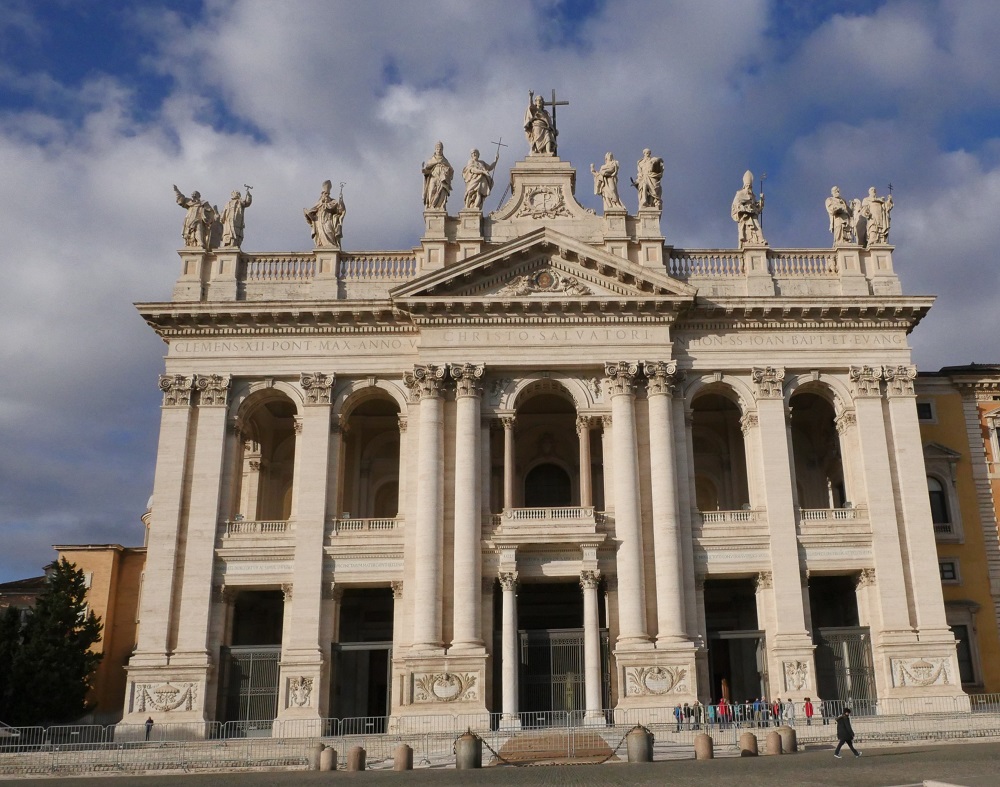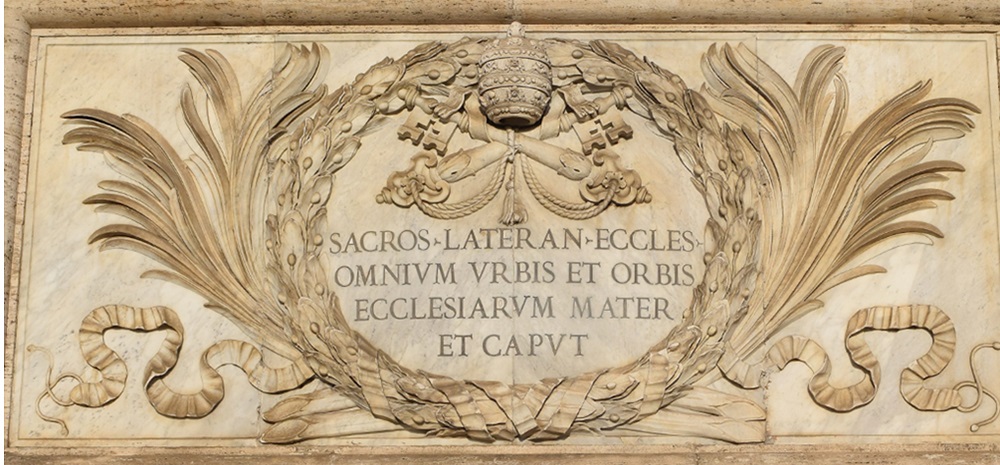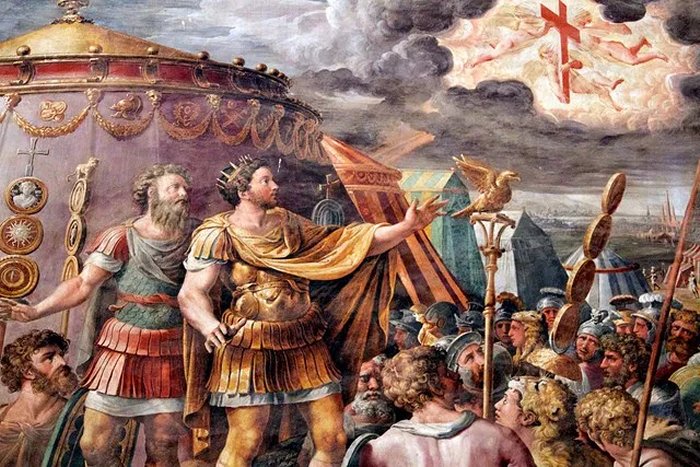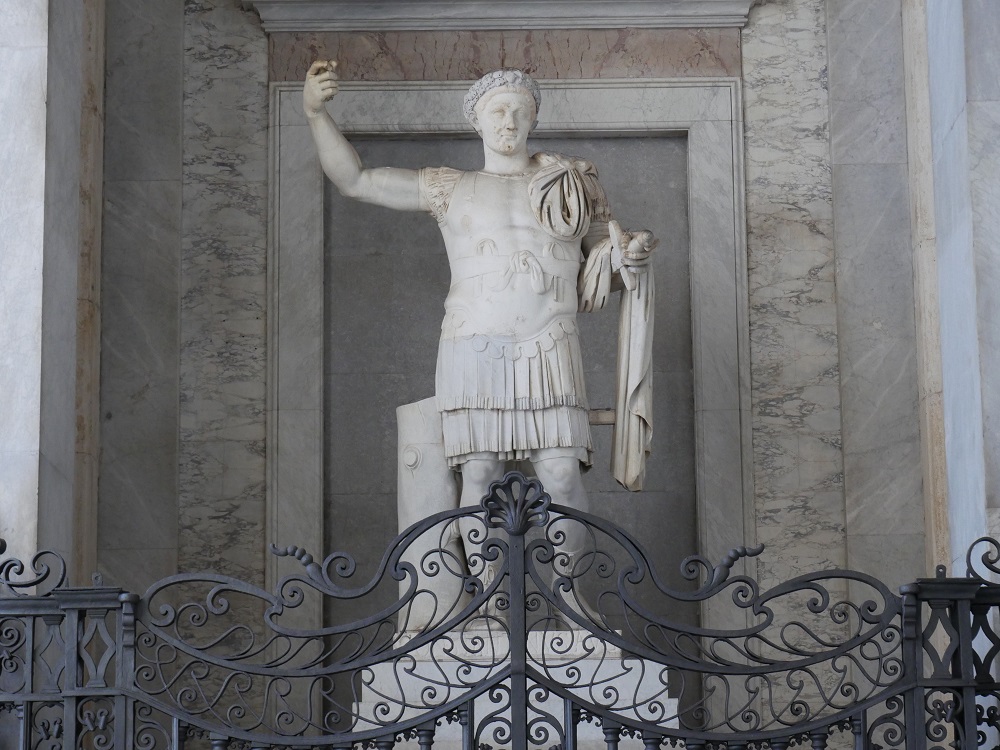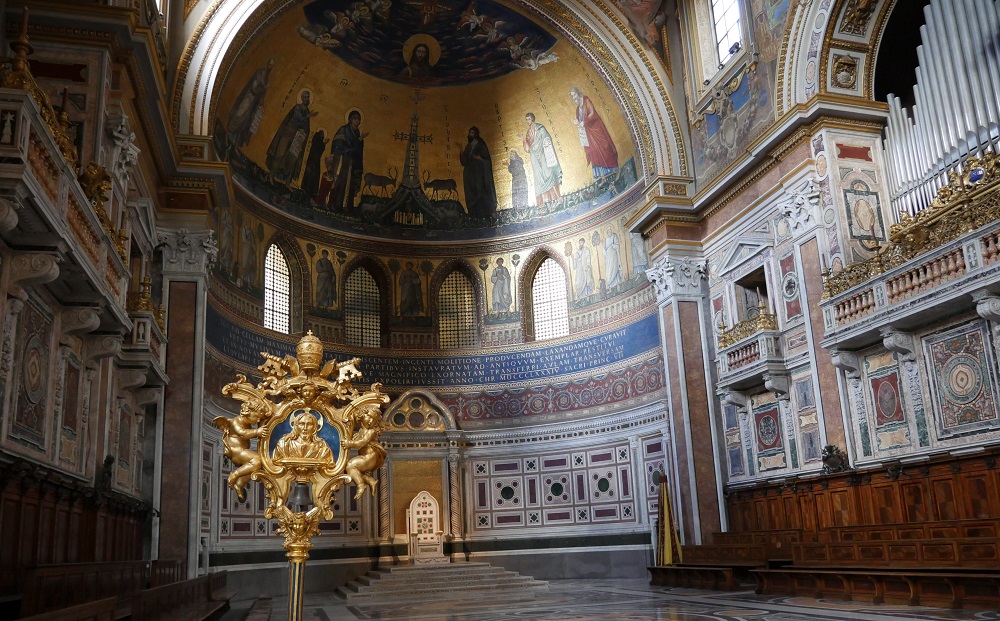St John Lateran’s Basilica in Rome is the “Mater et Caput”, ‘Mother and head’, of all churches in Rome and the world. This fact is solemnised by the relief that adorns the entrance to the Basilica.
The name “Lateran” is derived from the fact that this Basilica was constructed on the territory that belonged to the Lateran family before it was bequest as an inheritance to Fausta, the wife of the Emperor Constantine. The Basilica was consecrated by Pope Sylvester I on the 9th November 324 and the liturgical feast of the Basilica, which is celebrated on the same day, commemorates this event. This feast has a special importance because the Lateran Basilica was the first church dedicated to the Most Holy Saviour under the express wishes of the Emperor Constantine. The entire Church celebrates this feast as an affirmation of unity with the Pope who is the Bishop of Rome and Head of the Universal Church.
The existence of the Basilica testifies to Constantine’s vision of the cross in the sky which turned out to be a prodigious event that profoundly changed the practice of Christianity during the first centuries.
Bishop Eusebius of Caesarea, a friend and confident of Constantine, recounts that the night preceding the battle for domination of the Roman Empire against Maxentius, the Emperor considered which god to appeal to for help and protection in the battle. Like his father before him, Constantine had decided to adopt the sun god and he prayed that this god would reveal himself to him. Suddenly, a vision of an illuminous cross appeared in the sky which was visible to the whole army. Beneath the vision were the words, “In hoc signo vinces” which means ‘with this sign you will be victorious’. The following morning the army went into battle bearing the sign of the cross.
The battle took place on the 28th October 312 at Saxa Ruba in Rome and concluded with the Battle of the Milvian Bridge. Maxentius stumbled with his horse and fell into the River Tiber leaving Constantine free to enter Rome victorious.
Thanks to this victory, the Emperor brought an end to three centuries of Christian persecution during which many Christians were martyred. Constantine publicly authorised Christian worship with the proclamation of the celebrated Edict of Milan in 312.
The Emperor himself initially dedicated the Basilica to the Most Holy Saviour in gratitude for the victory. Only later, when the Basilica was also dedicated to Saints John the Baptist and the Evangelist, did it become known by its most popular name as St John Lateran.
The importance of the feast of the ‘dedication of the Lateran Basilica’ celebrates the fact that Christians could freely come together in union with their Bishop to celebrate the liturgy of the Church and receive the teaching of the doctrine of the faith. From antiquity, the Basilica became the Cathedral of Rome and the world. The Pope has his Cathedra or Chair here as a sign of his teaching, his magisterium and his precedence. Therefore, the Petrine ministry is only initiated when the elected Pope has taken possession of the Chair of St John Lateran.
This beautiful edifice represents the Church – the assembly formed of the ‘living stones’ of Christians who today, as in centuries past, continue to testify their faith in Jesus Christ, the Most Holy Saviour.

